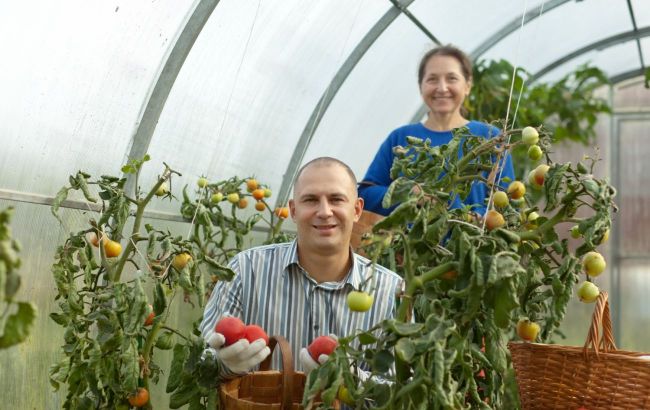Why are greenhouse vegetables not as tasty as seasonal ones - Reason and how to fix it
 Why are greenhouse vegetables not tasty (photo: Freepik)
Why are greenhouse vegetables not tasty (photo: Freepik)
Anyone who has ever tasted vegetables straight from the garden knows how bright and intense their flavor can be. However, you can often hear that greenhouse vegetables are inferior to their “relatives” from open beds in terms of taste. Is this just a stereotype, or is there some truth to it?
How greenhouse vegetables are grown
Greenhouse vegetables are grown under controlled conditions, which allows for optimal temperature, humidity and light levels. This makes it possible to harvest in any season, even in winter. Thanks to technology, plants in greenhouses are protected from weather changes and pests, which contributes to their active growth.
However, due to the artificial nature of the conditions, fertilizers and growth stimulants are often used. This allows for high productivity, but can affect the natural balance of flavors. As a result, greenhouse vegetables may appear less flavorful.
Why do vegetables from outdoor beds taste better
Vegetables grown in the open field receive natural sunlight, and rainwater, and are exposed to seasonal temperature changes. This creates complex flavors that make vegetables rich and flavorful.
In the open field, plants usually develop more slowly, which contributes to a higher concentration of nutrients. Natural stresses, such as temperature changes or lack of water, also stimulate the formation of sugars and acids that affect flavor.
However, these vegetables are more susceptible to pest and disease damage. Therefore, they do not always look as perfect as greenhouse vegetables.
Does seasonality affect the taste of vegetables
Seasonal vegetables often have a more intense flavor because they ripen naturally. For example, summer tomatoes or cucumbers grown under the sun have a rich flavor that is difficult to recreate in a greenhouse. Greenhouse vegetables, on the other hand, often ripen at an accelerated pace, which affects their composition.
As a result, their flavor can be less pronounced and their texture less dense. However, greenhouse produce has the advantage of being available, as it allows you to enjoy fresh vegetables even in winter. So it all depends on what is more important to you: seasonality or availability.

Greenhouse vegetables have a slightly different flavor (photo: Freepik)
Are greenhouse vegetables always less healthy
It is a common belief that greenhouse vegetables contain fewer vitamins, but this is not entirely true. Under controlled conditions, plants receive balanced nutrition, which contributes to the accumulation of nutrients. However, the vitamin content can depend on the variety, growing method, and harvest time.
For example, greenhouse tomatoes harvested while still green do not have time to gain their full flavor and vitamin composition. However, modern greenhouses use technologies that allow them to maintain product quality. Therefore, it is worth paying attention to the manufacturer and growing conditions.
How to make greenhouse vegetables taste better when growing
To ensure that greenhouse vegetables are not only healthy but also tasty, there are several important aspects of growing that need to be considered. Here are some tips to help you get more delicious and flavorful vegetables from your greenhouse.
Choose the right variety. Choose vegetable varieties that are best adapted to greenhouse conditions and can produce a rich flavor. For example, tomatoes, eggplants, and peppers are suitable for greenhouses, as they can grow well in limited space and under even light. Choosing varieties with natural disease resistance also improves flavor.
Optimal humidity level. The right level of humidity in the greenhouse is essential for the development of vegetables. Too high humidity can lead to the development of fungi and mold, and too low humidity can lead to plant stress and loss of flavor. It is important to maintain the humidity balance and ventilate the greenhouse regularly.
Proper lighting. Vegetables need enough light to form flavors. If there is not enough natural light, you can use additional lighting with a high content of red and blue waves of the spectrum, which stimulates the growth and ripening of vegetables.
Regular fertilizing. Use organic fertilizers or balanced mineral complexes to nourish plants. They help to provide vegetables with the necessary trace elements that help to improve their flavor. But be careful with the amount of nitrogen fertilizers - their excess can reduce the quality of taste.
Temperature conditions. Vegetables need a stable temperature so that they can ripen properly. For most species, the optimal temperature during the day is about 20-25 degrees, and at night - a few degrees lower. Maintaining stable temperatures will help vegetables develop their natural flavor.
Regular maintenance. In a greenhouse, it is important to regularly inspect plants to prevent diseases and pests. Removing damaged leaves and timely pest control treatments will help to conserve plant energy for growth and flavor development.
Sources: Moysad.com.ua, Zhyvazemlia.com, Ogorodnik.com.

